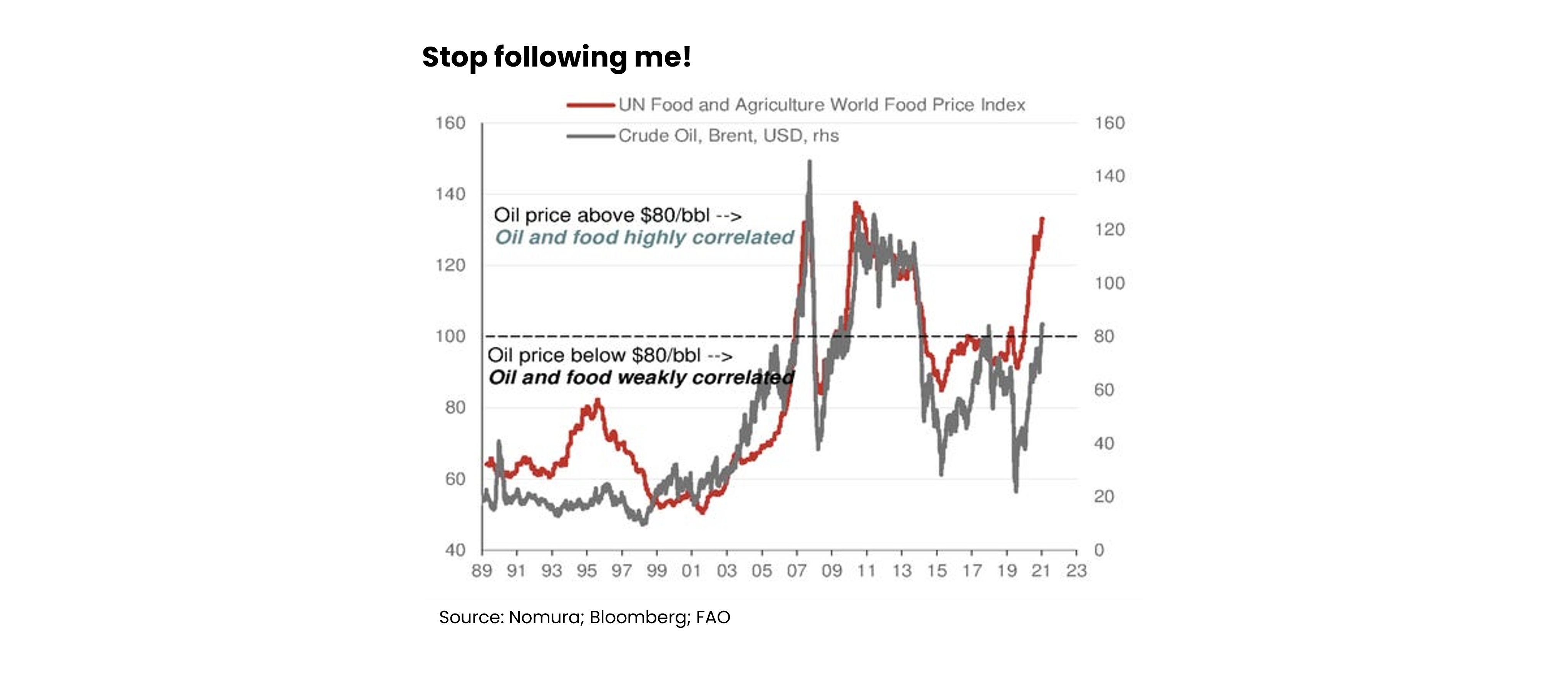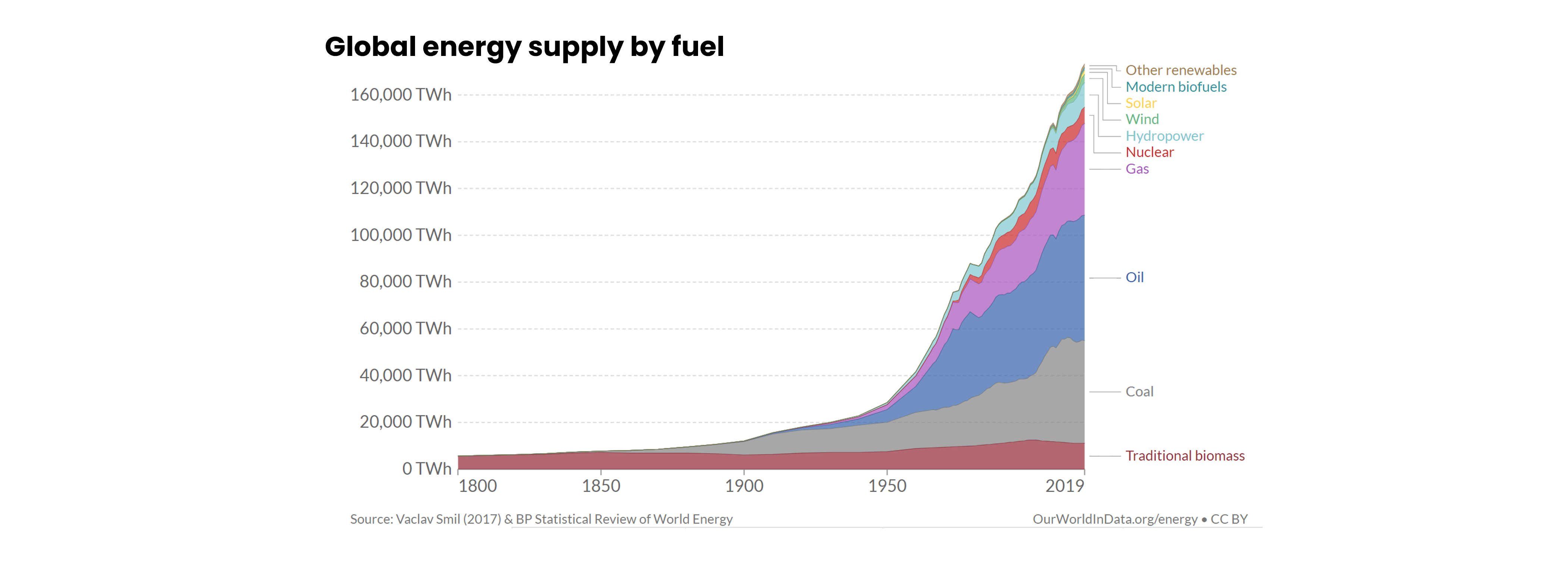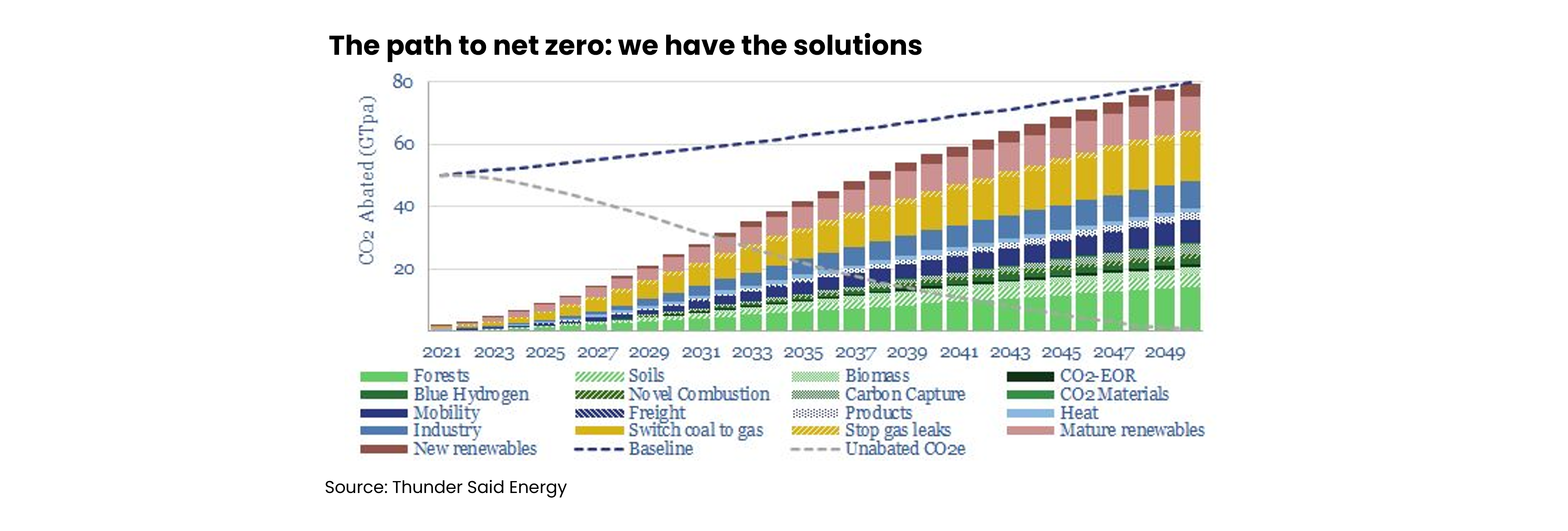The Energy Transition: pragmatism over idealism, people over politics
Selva
7 min read
1/18/2022
Share
It’s getting cold in here
Have you ever heard of the term “energy poverty”? It’s the inability to afford to keep your home warm in the winter and it’s the reality for 35 million people in the EU today. With natural gas prices reaching new record highs in December, an increase of ~800% compared with the start of 2021, and warnings from European power companies that household energy bills will rise by as much as 50% this year, this sorry number will climb.
Last week, Ovo Energy, a British gas and power provider, flippantly suggested that people who can no longer afford to heat their homes should cuddle their pets and eat porridge to stay warm.
Food is getting more expensive. Filling your car will take a bigger bite out of your pay check. Worst of all, coal is making a comeback. This is the cost of the energy transition, or at least the narrow-minded renewables-at-all-costs-to-hell-with-hydrocarbons transition that we seem to have chosen, and it’s just getting started.
If you thought the only difference a shift to a zero-carbon economy would make to your life are the new EV charge points on your street and more plant-based milk options in Starbucks, I’m sorry to disappoint.
The transition was never going to be easy, but it didn’t, and still doesn’t, have to be this way.
Energy is the economy
Before we dive into discussing the energy transition we should first think a little about energy. This invisible force we all rely upon but often take for granted is a lot more than cars, lights and flights. It puts food on your plate, clothes on your back, medicine in your bloodstream and a roof over your head.
Energy’s abundance and affordability over the past century has driven huge improvements in quality of life, life expectancy, hunger, literacy, poverty, infant mortality etc for practically everyone around the world.
Energy - and its cost - is embedded in almost everything. Energy is the economy. So handle with care.
As energy prices rise, so too do the prices of almost everything else, including food. Energy is needed to grow, fertilise, harvest, process and transport food. In November, the UN reported that global food prices rose to their highest levels in a decade in 2021, driven in large part by rising oil and gas prices. You and I can cope with paying a little more for our croissants but for many at home and abroad this will mean struggling to feed their families.
There’s precedent here: in 2008, as oil prices reached a record $147/bbl there was an under-reported food-crisis across developing countries as wheat, rice and corn prices surged, causing widespread hunger and social unrest.
The point is that when energy prices rise, people go hungry and cold. If you only look at energy through an environmental lens, you ignore the very real and very severe human impact.

This time it’s different
So, what is all this talk of the “energy transition”? Well, it broadly refers to the decarbonisation of the global economy. The transitioning away from an energy system that isn’t sustainable, to one that is.
This isn’t the first energy transition. In the early 1800's our ancestors began to shift from burning wood and dung, to burning coal. Then, in the early 1900's, oil and gas production began to take off, challenging coal’s dominance in the global energy mix. Both shifts took about 100 years before the incumbent dominant fuel was knocked-off its perch by its predecessor. Now, the third energy transition to a low carbon system is under way.

But this transition is very different in two crucial aspects. Firstly, whereas previous transitions have consisted of additions to the existing energy mix - coal supplemented wood, oil and gas supplemented coal - this transition calls for a total transformation of the status-quo. It’s not enough for us to just build on what we already have, we must pick apart and improve everything from the bottom up.
The second key difference is that previous transitions have moved from inferior sources of energy to superior, more efficient sources (sustainability credentials aside). Coal is more energy-dense than wood, oil and gas are more energy-dense than coal.
Compare this to today’s transition where the task is to reduce our reliance on hydrocarbons in favour of renewable energy sources: renewables are diffuse and inconsistent, and the electricity they generate is hard to store, making it unsuitable for many uses like aviation and shipping. Fossil fuels, in contrast, store huge amounts of energy in a tiny space and can be easily, consistently and affordably extracted, transported and combusted. If it wasn’t for the nasty environmental externalities, hydrocarbons would be a truly miraculous source of energy. No wonder we have become so addicted to them.
A quick look at the chart above will help to demonstrate the mind-boggling scale of the challenge. Over the past ~100 years the existing energy system has grown faster than Japanese knotweed and embedded itself into the fabric of our economy, touching every corner of the world. We live in the house that hydrocarbons built. And it’s still growing.
By 2050, global energy demand will be about 50% higher than it is today, driven by economic development and growing populations. That’s roughly the equivalent of adding another TWO Chinas to energy demand. Try to imagine all the new infrastructure, construction and resources this will entail, all the cargo ships, planes, metals and cables. The challenge is not just providing clean energy but providing energy full stop.
And in case that doesn’t sound tough enough, remember that renewables provide only electricity, and today only ~25% of total energy demand is met by electricity – the rest is met by direct combustion (petrol in cars and coal in factories for example). For a world to be run on zero-carbon power, the entire electricity mix needs to be met by zero-carbon sources while, in parallel, the whole global energy pie is electrified. Oh and there’s only a few decades left to do it. Either one of these transformations alone would be a tall order, combined it’s colossal.
How not to go “green”
As we hope is clear by now, this isn’t easy. Even so, the mess that we’re witnessing in Europe is what happens when policy makers get it badly wrong, when they focus on providing clean energy, but ignore the two other crucial characteristics of energy supply: reliability and affordability.
The problem is that currently no one energy source has these three characteristics of being clean, reliable and affordable. Coal, oil and gas are reliable and affordable but not clean, nuclear is clean and reliable but not affordable, wind power is clean and affordable but not reliable. It’s like one of those “pick two of three” games. And because none have all three, we need to mix and match, accepting that no energy source is perfect but all have a role to play.
Now, back to the gas. In 2014, over $800bn was invested in new oil and gas supply. By 2020, following years of intense environmental pressure and several commodity price crashes, this number had fallen to $380bn (granted some of this decrease has been due to cost deflation). In the same period of time, demand for oil & gas has grown by ~10%.
It doesn’t take a Nobel prized economist to realise that with supply and demand movements like this an energy shortage akin to the one we are facing today should come as no surprise. We are trying to replace the existing system, by choking off investment into fossil fuels, before a viable replacement has been developed. More demand + less supply = bad news.

Higher prices and higher CO2
The most grating thing about this mess is not that it was entirely predictable, or self-inflicted, or even that energy will get more expensive, it’s that it is doing more damage to the environment. With gas prices through the roof, coal, a much dirtier substitute for gas, is on the up. After falling in 2019 and 2020 (yes, in part due to Covid), global power generation from coal is expected to jump by 9% in 2021 to an all-time high.
In September the UK was forced to fire-up coal plants to help provide electricity as gas-powered generation was too expensive. In China, domestic coal production hit a record high in November as high gas prices made the cleaner fuel less competitive.
When given an immediate choice between keeping the lights on or keeping CO2 lower, governments will always choose the lights.
By encouraging more coal use, these gas shortages have done precisely the opposite of what the Greenpeace gang stand for and have resulted in more, not less, CO2 being released into the environment. Well played. If your objective is to protect the environment, then getting rid of coal, the dirtiest fossil fuel, has to be the priority. Today the best way to do that is with affordable natural gas and this requires investment. The enemy of my enemy is my friend.
Meanwhile, record high power and carbon prices push industrial investment away from Europe and towards countries with lower environmental standards. Jim Ratcliffe, CEO of INEOS, a British multinational chemicals company, put it bluntly in an open letter in 2019, “Nobody but nobody in my business seriously invests in Europe. They haven’t for a generation”. Again, green energy policy doing more harm than good.
Fossil fuels drive the energy transition, before the energy transition drives out fossil fuels
The divisive nature of the energy debate, where renewables are generalised as being good and fossil fuels as evil, ignores the dependency of the former on the latter. They are compliments rather than substitutes, at least for the medium term.
Take electricity generation. Gas is needed as a reliable and easily dispatchable source of power generation for when the sun isn’t shining and the wind isn’t blowing (solar works about 15% of the time and for wind it’s about 35%, on average). Yes, batteries and/or hydrogen may provide some of this back-up but the technology for both is still way off being ready for deployment at anything like the sort of scale that we need.
Coal is used to make the steel bodies of wind turbines, electric vehicles are full of oil-made plastics, and the vast amounts of raw materials that will underpin the energy transition like cobalt, nickel, copper and lithium are mined by oil guzzling machinery and transported around the world on hydrocarbon powered ships. The energy transition is not possible without fossil fuels.

The good news, the really good news
Sorry, this blog has been far too doom and gloom so far. That’s not our style and we don’t want to crap on everything without offering an alternative. So, here’s the good news: we have the solutions available to us today for decarbonisation by 2050. I repeat, we have the solutions today to prevent the worst of global warming.
Our friend and energy transition grand master, and founder of consultancy Thunder Said Energy, Rob West, has crunched A LOT of numbers and concluded that reaching our climate goals are possible at a very-affordable average price of $40/tonne of CO2 abated.
Through various levers such as reforestation (wink, wink), a coal to gas switch, renewables and energy efficiencies, we can get there. We don’t need some breakthrough, unproven, perfect technology to fall out of the sky. We need to deploy. We need to adopt pragmatism and accept the role of gas in the system in order to get rid of coal, to accept that there will be CO2 emissions for decades to come and therefore accept the importance of nature-based offsetting initiatives. Most importantly, we need to set aside idealism.

If you are interested in objective, thorough, data-led analysis of all things energy transition then do yourself a favour and follow Rob on Linkedin and sign up to his newsletters:
It is as though a collective fantasy for hypothetical, perfect, future energy technologies has de-railed the implementation of real, practical options that are available today
What we are trying to say is…
Today, more people are hungry and shivering in their homes and there is more CO2 in the atmosphere because of misguided energy policy and zealous, ideological environmentalism. These issues will continue for as long as policymakers ignore pragmatism and continue to demonise all fossil fuels. I say this as a founder of a climate start-up, not a hydrocarbon stooge.
The huge challenge of decarbonisation is an issue of science, economics, politics, diplomacy. Blind idealism might sound nice and make for better captions on cardboard protest signs, but if the energy transition ignores the human aspect and begins to leave people behind, as it is doing this winter, we’ll lose the crucial popular support needed to reach our lofty goals.
Thankfully we have the solutions, so let’s get behind them. All of them.
Join Selva today to take personal action and support the world's best reforestation projects.
